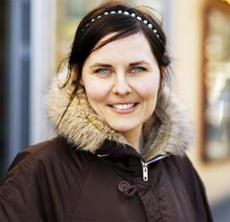fitness news
![]() ,
,![]()
Font size Women’s Health
Iceland Women Health Information
– Reported, January 24, 2012
 Life expectancy for women is greater than that for men.The smallest gap is in Iceland is 3.4 years.Daily smoking percent of women 1579 years is 19%.Overweight women percent of 1574 years of age is 39 %.
Life expectancy for women is greater than that for men.The smallest gap is in Iceland is 3.4 years.Daily smoking percent of women 1579 years is 19%.Overweight women percent of 1574 years of age is 39 %.
Obese women percent of 1574 year of age is 19 %.Women who commit sucide is 4 %.
For 19971998 the life expectancy in Iceland,according to national data, was 81.5 years for women . Using 3-year moving averages, in 1994 the overall life expectancy was 78.8 years.
The high mortality among women is primarily caused by lung cancer. The Icelandic Cancer Society (personal
communication) attributes this to the early and significant increase of smoking prevalence among Icelandic women.
Rubella is still not under complete control.
Icelands hepatitis incidence rate is below that of the EU but has increased in recent years. In 1998, the rate was 20 per 100 000 population versus 24 for the EU.
Syphilis has been virtually eliminated in Iceland.The incidence rates for tuberculosis are low.
In 1998, 6.3% of live births were to mothers below the age of 20 years. This represents a major improvement
compared with 1980, when the proportion was 13.9%. Nevertheless, the birth rate among young women is still higher in Iceland than in other Nordic countries and in most of the reference countries.
Women as a group live longer than men and have lower mortality rates for most causes of death. However, women have higher rates of morbidity and utilization of health care services (especially related to childbirth), and they can be more affected by social welfare policies than men are. As described earlier, the life expectancy at birth for females in Iceland is 81.5 years (19971998), about the same as in the EU. The gender gap in life expectancy at birth is 4.5 years (19971998), smaller than in the other countries because of the relatively
higher longevity of men in Iceland. At age 65,the gender gap is 3.3 years (19971998), also smaller than that in most countries.
The mortality from lung cancer is relatively high among women, similar to Denmark but much higher than in the other Nordic countries, in which the rates are close to the EU average. As mentioned, the rate of increase
among women 064 years old is also higher than the increase in the EU.
There are very few maternal deaths in Iceland:There have been no maternal deaths since 1991
(through 1998). The rate of abortion is a little below the EU average. However, the trend is increasing, while especially the Nordic average has been decreasing over the last decade.